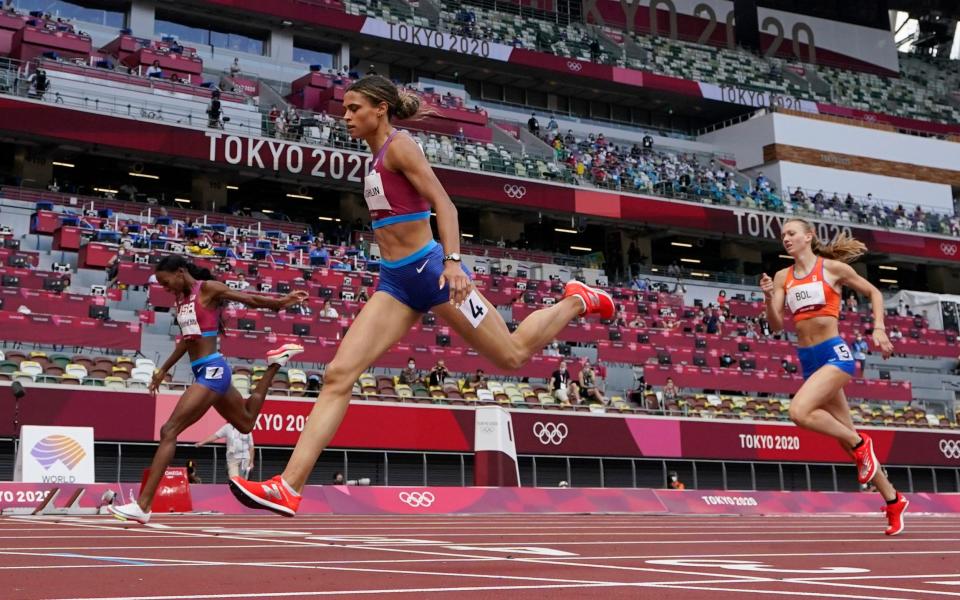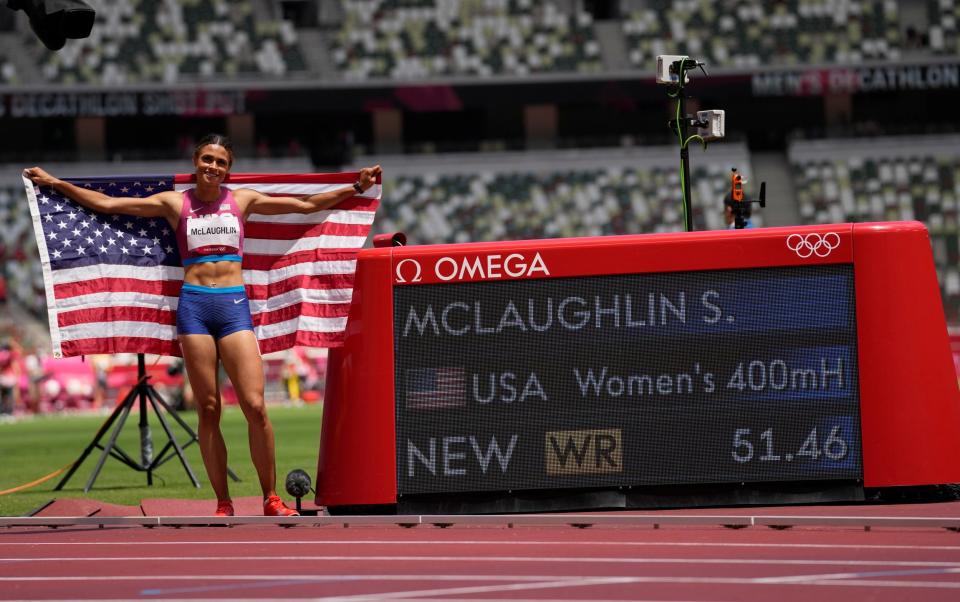Super shoes, super tracks and super talent: World record is shattered in women's 400m hurdles too at Tokyo 2020

Less than 24 hours after the world’s best male 400-metre hurdlers produced what many described as the “greatest race in Olympic history”, their female counterparts arguably exceeded it. In this era of super shoes, super tracks and super talent, it seems historic races come along every day.
“I am genuinely torn,” admitted Seb Coe, World Athletics president, when asked about such innovation on Wednesday. “My natural instinct is not to try and strangle innovation. But of course there is a balance.”
First, the race, because it was one that will live long in the memory.
Where Karsten Warholm had knocked a huge 0.76 seconds off his world record a day earlier, America’s Sydney McLaughlin took a whopping 0.44sec off her world record to win gold in an astonishing 51.46sec - a time that, incredibly, would have been better than the 400m flat world record until 1970.
Where Rai Benjamin had to make do with silver despite also going well under the world record, so did fellow American Dalilah Muhammad, who recorded a time of 51.58sec.
And where Alison dos Santos only claimed bronze with the third-fastest run in history, the same fate befell Femke Bol, of the Netherlands, who took the same medal in 52.03sec - a time good enough for the world record until June.

In honesty, it was probably a better race even than Warholm’s success the day before, given its greater level of competition.
In the blazing late-morning Tokyo sun, world champion Muhammad went out hardest and surged into an early lead that she maintained entering the home straight.
But at that point her two medal rivals loomed large. Bol was unable to quite close the gap, but McLaughlin grew nearer with every stride.
By the time the American duo took the last hurdle they were in unison and McLaughlin plunged deep into her energy reserves to claim an incredible gold medal.
The talent levels of all three medallists in both 400m hurdles finals is in no doubt. These are some of the greatest athletes ever to grace the sport, with recent records over the past few years to prove it.
But how else to explain lightning striking twice - the so-called greatest race being surpassed by an even greater one in less than a day - other than looking at external factors?
First, the shoes: so-called super spikes which all contain a carbon-fibre plate to aid with energy transfer. After his victory, Puma athlete Warholm criticised the Nike spikes worn by Benjamin and Muhammad, because they also feature an air pod underneath the forefoot to provide a bounce effect.
“If you put a trampoline there I think it’s bull----,” said Warholm. “I think it takes credibility away from our sport. I don’t see why you should put anything beneath a sprinting shoe.”
This time, McLaughlin and Bol both wore New Balance’s version of the super spikes - a shoe known to be one of the fastest around.

But McLaughlin also pointed to the Tokyo track, which is understood to be the fastest ever created.
“You can feel the difference,” she said. “A lot of people talk about the shoes, but I think it’s one of those tracks that gives you that energy right back, pushes you and propels you forward.”
Thanks to small pockets of air in the lower layer of the track, the designers have ensured athletes are provided an element of shock absorption, while also giving them greater energy return. The boffins behind the Mondo company who created it refer to a “trampoline effect”, and believe it could provide a one to two per cent performance advantage.
“As a 400m hurdler you can kind of tell how fast the track is by how easily you are making your steps between the hurdles,” said Muhammad. “It was spot on, at every hurdle. I could feel that energy return, especially when you go into (hurdle) eight and feel that death. I didn’t feel like I was going into death.”
Such factors, many people argue, make the times we are seeing at these Tokyo Games incomparable with those from previous eras.
World Athletics president Coe admitted that may indeed be the case. “It’s clearly fast,” he said. “How do I view it? I’m viewing really talented athletes who are probably running quicker on fast surfaces.
“We do need to make sure we’re not allowing designs or materials that really transform the sport into something we don’t recognise. I don’t think we’re there.
“At this moment I think we’re in about the right place. We’re not going to be leaving here with thousands of records having been smashed.”

 Yahoo Sport
Yahoo Sport 





































